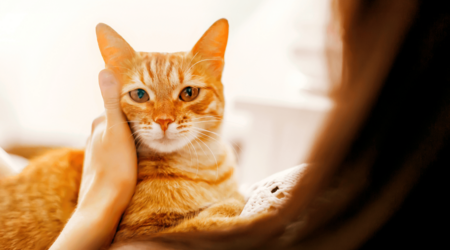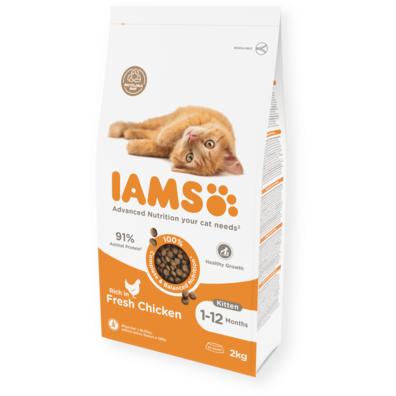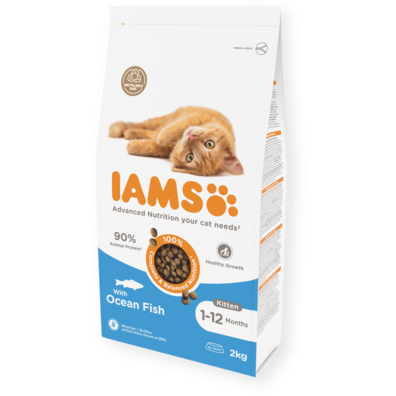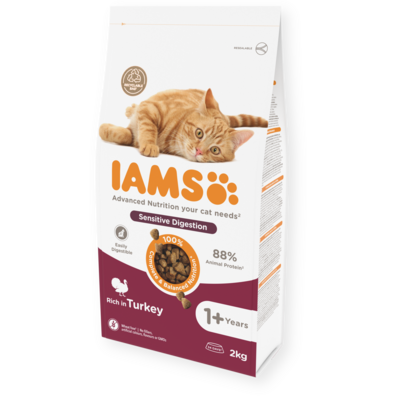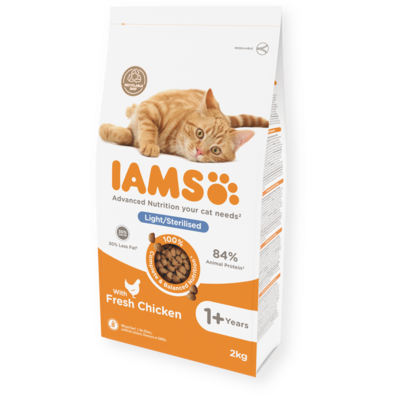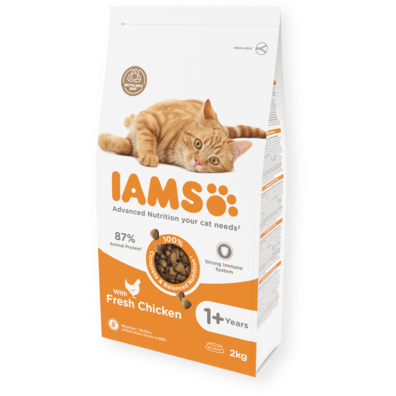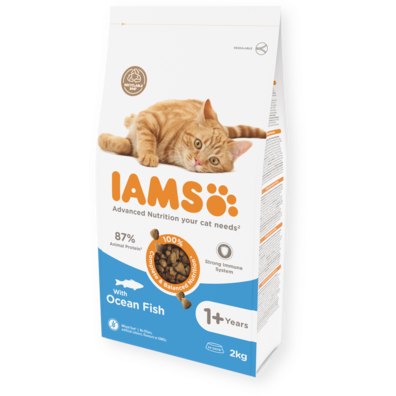Understanding cat language
The body language of cats
Cats are fascinating creatures whose behaviour is often puzzling. But if you take a closer look at cat language, you will be able to better interpret the subtle signals of your feline friend. From body language and various vocalisations to small gestures - cats have their very own way of communicating with us. In this guide, you will find out what is behind your cat's messages and how you can understand their language.

Recognizing cat behaviour
Can you hear me?
The cat's ears
A cat’s ears work like little antennas and can reveal a lot about its mood. Ears pointing forward suggest curiosity, attentiveness or relaxation – the cat feels safe and open to its environment. If the ears are laid flat against the head, it’s a clear warning sign: the cat may be scared, stressed, or preparing for a defensive reaction. Ears turned to the side can indicate uncertainty or mild irritation, showing that the cat is unsure about the situation. Rapid twitching or frequent movement back and forth means the cat is alert and focusing on various sounds in its surroundings.
Don't look me in the eye
The eyes
A cat’s eyes are incredibly expressive and offer valuable insight into its mood and well-being. The direction of the gaze, the shape of the pupils, and even the way a cat blinks all tell a story.
Slow blinking is a sign of deep trust and affection – often referred to as "cat kissing" – and if you blink back slowly, you can communicate in kind. Wide-open eyes usually signal surprise or heightened alertness, often triggered by sudden sounds or movements. Constricted pupils typically respond to bright light, though they can sometimes hint at discomfort or illness. In contrast, dilated pupils often indicate excitement, which could stem from fear, playfulness, or even aggression. Half-closed eyes generally suggest contentment and relaxation, such as when lounging in the sun. However, if a cat frequently holds its eyes half-closed or maintains a fixed stare, it might be experiencing pain, stress, or illness – a subtle but important signal for attentive cat owners.
Tale of the tail
The cat’s tail language
A cat’s tail is a powerful indicator of its emotions, often revealing how it feels even before it makes a sound. An upright tail typically signals happiness, curiosity, or confidence, especially when the cat is greeting someone. If the tail is tucked between the legs, the cat is feeling anxious or submissive. A slight twitch at the tip usually means the cat is focused – but it can also be a sign that irritation is building. When the tail lashes back and forth more forcefully, it’s a clear warning: the cat is angry or on edge. And if the tail suddenly puffs up, the cat is frightened and preparing to defend itself.
By the posture
A cat's posture and movement can reveal a lot about its emotions. When a cat lies relaxed on its side or exposes its belly, it is showing trust and confidence. A raised back with ruffled fur indicates fear or a readiness to defend itself. If the cat crouches low, it’s often a sign of tension, whether due to uncertainty, fear, or the anticipation of prey. Walking sideways with an arched back is a playful gesture, often a "cat hop" to invite interaction. Lastly, when a cat stands tall with a tense body, it is either expressing self-confidence or marking its territory.
What the cat's meow means
Cat meows very loudly
Loud meowing is often hard to ignore and should be taken seriously, as it can indicate various things about your cat’s needs or health. Often, a loud meow is a demand for attention, food, or simply a desire to stop being ignored. It can also be a sign of pain or discomfort, especially if the loud meowing occurs suddenly and without clear cause. In some cases, a loud meow is simply a form of protest—such as when a door is closed, or the cat feels excluded from a space.
For unneutered cats, loud calls may be a sign of heat, often accompanied by a plaintive tone. Older cats, on the other hand, may meow loudly when they feel disoriented or lonely, which is typically a sign of age-related confusion.
Cat meows a lot
If a cat meows frequently, it’s important to take a closer look at the possible causes – the cat is trying to communicate something to you. One common reason is boredom or an underutilized play instinct, which leads them to meow constantly as they seek more stimulation. Changes in the environment, such as moving to a new house, new furniture, or the introduction of other animals, can cause stress, which they express through loud meowing. Separation anxiety when left alone is another common trigger, especially in cats that are very people-oriented. Hunger or thirst can also lead to persistent meowing, so a quick check of their food and water bowls can help. Some cats simply meow a lot to demand closeness, attention, or cuddles. However, if the behavior is sudden and unusually intense, it could be a sign of health problems, and it’s recommended to consult a vet to rule out any medical concerns.
How to recognize an agitated cat
Restlessness in cats often manifests itself gradually - not always loudly or conspicuously. If you know the small signals, you can take early countermeasures and give your cat a sense of security.
- It constantly changes its place or lying position and cannot find peace.
- Excessive grooming, sometimes to the point of bald patches, can be a sign of stress or nervousness.
- Increased meowing or other unusual noises indicate inner restlessness.
- Loss of appetite, but also excessive eating, can be caused by stress.
- If she suddenly hides frequently or avoids certain rooms, she may feel insecure.
- Frequent marking outside the litter tray is often a cry for help in case of inner tension.
A clear change in sleeping behaviour - whether too little or unusually much - can also indicate restlessness.
How to spot an aggressive cat
Aggression in cats is usually clearly visible - they usually warn you before it gets serious.
- Ears laid flat with the auricles turned to the side signal defensiveness.
- A fixed, staring gaze shows that they are concentrating on a possible confrontation.
- Dilated pupils indicate strong excitement - whether out of fear or anger.
- If the body is tense and ready to pounce, an attack may be imminent.
- Whipping tail movements are a clear warning signal: keep your distance!
- Snarling, growling or deep rumbling indicate that the cat feels threatened.
- Raised fur on the back or tail makes it look bigger - a classic threatening behaviour.
If it shows teeth and claws, this is the last warning of a possible attack.
Why your cat is hiding
Cats are experts at retreating, and this behaviour is deeply rooted in instinct and experience. A strong need for security often makes them hide regularly – this is completely normal and essential for their well-being. Changes in the environment, such as new furniture, moving to a new house, or renovations, can trigger stress and cause them to seek refuge. The presence of strangers or other animals in the house can also lead to retreat, as the cat waits for the situation to feel “safe” again. Loud noises, such as thunderstorms, fireworks, or construction sounds, often frighten cats and drive them to hide. If a cat is in pain or feeling unwell, they may withdraw, which is an important warning signal. Pregnant cats, driven by instinct, will seek out sheltered places to give birth. Tensions with other cats in the household or territorial disputes can also prompt them to hide. Finally, after traumatic or negative experiences, cats need time and a safe place to recover.
